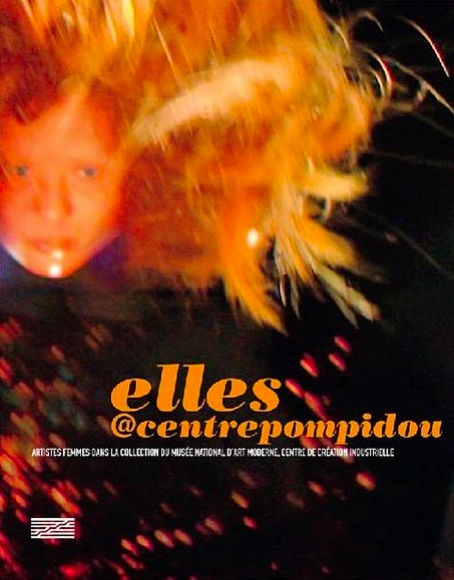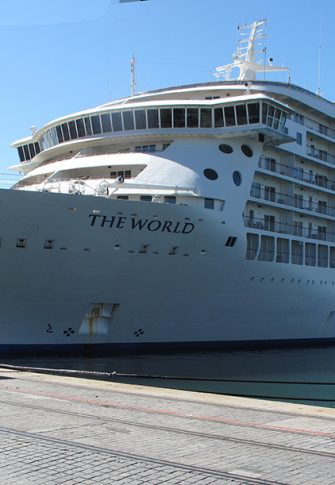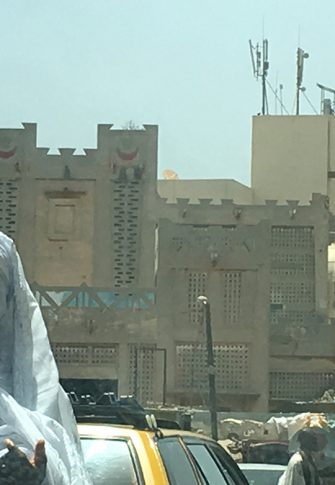Sue Willamson travelled to Le Havre, Normandy, this month for the opening of the exhibition ‘L’Autre Continent: Artistes, Femmes, Africaine’. Here is her interview with the acclaimed curator, Camille Morineau.
Sue Williamson: Camille, to start, I’d like to ask you a little bit about your career… you were a senior curator at the Centre Pompidou … for how many years?
Camille Morineau: For ten years, from 2003 to 2013, and before that I was working mainly for the city of Paris, for another ten years.
SW: In the field of culture?
CM: In the field of contemporary art, always. Modern, I mean, 20th century art.
SW: And your exhibition ‘Elles’ which was at the Centre Pompidou, that was from 2009 to 2011?
CM: Exactly, yes.
SW: And could you tell us about that exhibition?
CM: Yes, it was a project – a crazy project actually – which came out after different tries from me to propose a show about feminist art in the museum, that didn’t succeed.
So, I was labelled as a ‘feminist curator’ in Centre Pompidou, and at the time Centre Pompidou was also labelled as a ‘anti-woman’ museum. There had been a show, a collective show, with only men and [the Pompidou] saw some bad press about that. So, somehow when I showed up with this crazy idea of just showing women in the permanent collection – as you know the permanent collection space is very big…
SW: Yes …
CM: … it somehow got accepted. The director told me ‘You can do that, but start with a few months because nobody knows… it’s never been done, so we don’t know how the reaction is going to be from the public or the press’.
The museum team was afraid that there would be a rebellion from male artists, um, who would be expelled from the museum. They were also afraid about the scandal, I mean – it’s never been done before! So, who knows what people are going to say, the public, will they ever come, or the press?
So, I worked for a year with a team that I chose, within my colleagues. We were five curators and about five junior curators working very quickly, scanning the collection (we didn’t show all the woman artists in the collection, we made a choice) and I worked in a way on three projects; the project of the show, the project of the catalogue, and the project of the website.
And each of these projects were, in a way, as important to me. I was very aware that in France you couldn’t just, uh, ‘show up’ with that kind of project without constructing a context for it. France is a very ignorant country about what, you know, what is called ‘gender studies’. Although things have changed since 2009… but at the time, very few people even in university knew about that. And it’s still not really a subject.
The website is still called ‘Elles’ on Centre Pompidou, and you can find on that website artists’ portraits, information about socioeconomic history of women, all organised in a chronology. So that was a huge work for me but very important because it, it put the show – the exhibition of these artists – in their context; French but also an international context.
It was an amazing experience for me because I realised that my intuition about these ‘hidden’ women artists was absolutely right. Not only were they extremely interesting, but they were almost completely unknown. Many of them had never been shown. They had been bought by some curators, which is a wonderful thing already, but never been shown, never been restored, never been properly put into their own history, their own movement or groups…
So, there was this enormous research to do and, um, information to find, and in a way narrative discourse to reconstruct for many of them. We organised rooms, themes, names for the movements that had no names. We had a very small room with feminist artists because there was not so many of them in the collection, most of them I had been buying for a few years before I worked on ‘Elles’. So it’s not an exhaustive view on uh, ‘women artists’ history’ it’s just a portrait of the Centre Pompidou collection through women artists. A very specific thing.
While I was working on the presentation – I tried to get more acquisitions, for example I bought a very important piece from Rachel Whiteread, the English artist, because we had none of her work… So I tried to do a few things like that but it was very difficult because I had very little time.
SW: And what was the reaction of the art press and the public when ‘Elles’ opened?
CM: So then, the show opened in an atmosphere [that was] dense and exciting, and finally it was a huge success. Not only [did] a lot of people come (we had two million and a half visitors) but a lot of journalists came [too].
So it was pushed forward in time from a few months to one year, from one year to two years. And then it became not one show but two shows, and then three shows because there were a lot of works on paper, a lot of photographs, so I had to, you know, change them. And then I got these donations from artists, from galleries, from collectors, who were aware that it was becoming something important…
Ah, so, that’s my story… So ‘Elles’ somehow shaped and, uh, re-shaped my professional life.
SW: Before ‘Elles’, what were some of the important shows you worked on at the Pompidou?
CM: Before that, and after that, I was working on shows like Yves Klein, Gerhard Richter, Roy Lichtenstein… very interesting shows but having also in mind that, what I had discovered couldn’t just be left as it was, that I had to somehow continue working on that as a sort of, uh, ethical responsibility.
So I tried to do that within the museum, within Centre Pompidou. I proposed a project for the Research Centre on women artists and somehow, it proved to be difficult. The museum was not really interested, the museum had ‘other priorities’, this library had ‘other priorities’, etcetera – the context was not good. So, at some point I made a difficult decision to leave the museum and leave my salary as a curator, and become a freelance curator and create a non-profit.
SW: And what has been the result of that difficult decision?
CM: I’ve been spending the last two years trying to find uh, fundraising for my non-profit, it’s called AWARE (Archive for Women Artists Research and Exhibitions) and the, the main purpose of that non-profit (association) is to create a website – very much in the image of ‘Elles’, which I had done for the show.
I found public money, private money, and I’m working very hard on it, and I think I’ve finally secured enough um, enough funds to make AWARE permanent. To have not only a website but also a space, a small space in Paris with a dedicated library on women artists, and potentially a place where researchers and students can come and work, and find the information they want, and that information will also be, is already, accessible on the website (it’s a French-English website). It’s meant to be for everybody in a way, not to be for a specialist, and it’s meant to make all these womens’ histories visible.
So that’s my crazy history! [laughs]
SW: And here we are here in Le Havre, where you’ve curated this show ‘L’Autre Continent: Artistes, Africaine, Femmes’, and you said on a previous occasion that the curatorial decision for this focus on women artists from Africa was because when you did the show ‘Elles’ at the Pompidou, there wasn’t a single African woman artist in the collection…
CM: Yes. That’s correct.
SW: So you’re working to redress that situation?
CM: Yes, in that situation I don’t want to criticise anybody. For me, personally, it’s to work on the continents and the countries that I didn’t know about. Again, bringing out, making visible, what was invisible. But I’m not the only one to do that, there have been quite a number of shows on African women artists lately, and a few of them were in France, or in Belgium in Europe, so the information is, is finally coming out…
SW: Thank you so much, Camille.
• ‘L’Autre Continent: Artistes, Femmes, Africaine’ is presented by the Positive Planet Foundation at the Museum of Natural History in Le Havre, from September 15 to December 3 2016.
The artists on the exhibition are ruby onyinyechi amanze; Malala Andrialavidrazana; Seni Awa Camara; Virginia Chihota; Lebohang Kganye; Zanele Muholi; Mimi Cherono Ng’ok; Fatou Kande Senghor; Sue Williamson.









